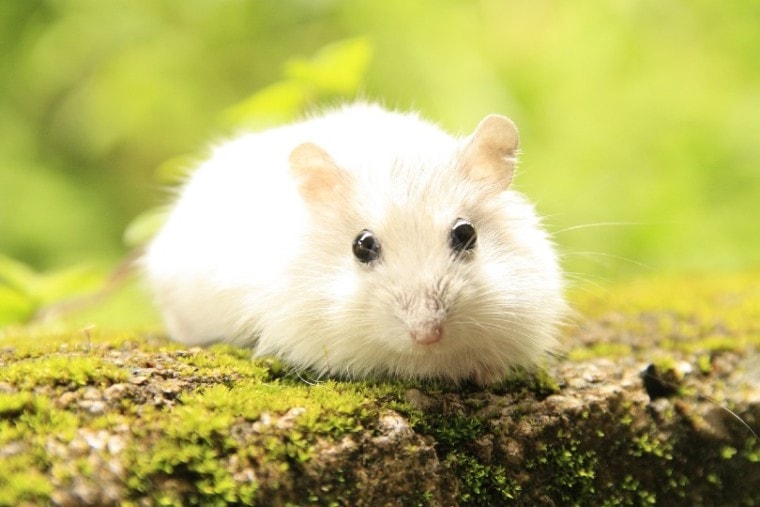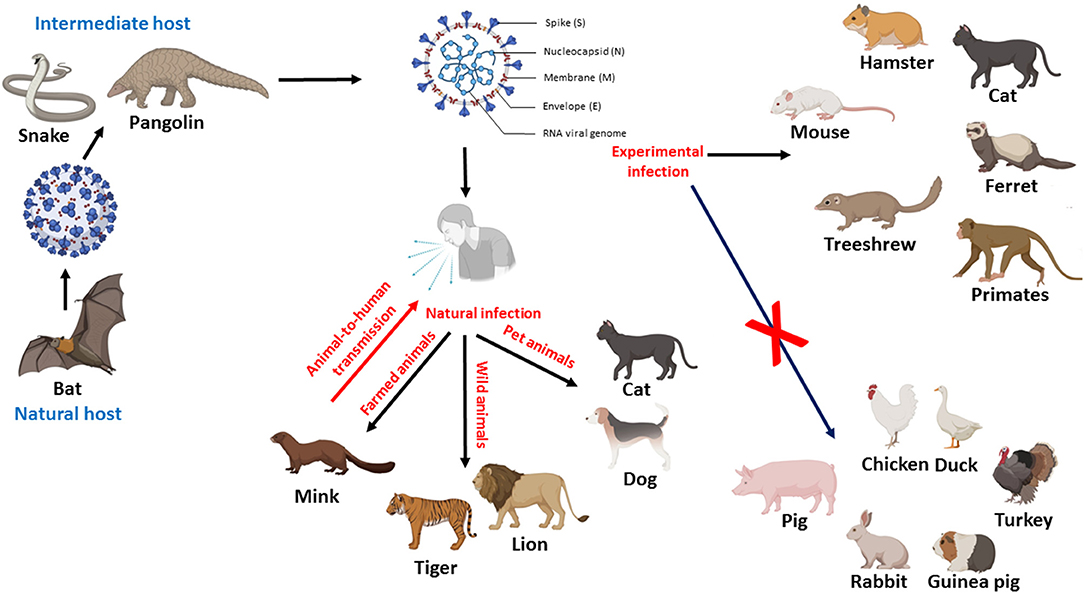If you’re a hamster owner, you know how important it is to keep your furry friend healthy. Respiratory infections are a common problem for hamsters, and they can be a cause of concern for any pet owner. In this blog post, we’ll discuss the symptoms of respiratory infections in hamsters, how they can be prevented, and what you can do to help your hamster recover. So, let’s dive in and learn how to keep our hamsters happy and healthy!

1. Understanding Respiratory Infections in Hamsters: Causes and Symptoms
Hamsters are prone to respiratory infections that can lead to serious health problems if left untreated. These infections are typically caused by environmental factors such as dust, smoke, or allergens in the air. Bacteria and viruses, including the common cold and flu, are also common culprits. Symptoms of respiratory infections in hamsters include sneezing, discharge from the eyes and nose, and difficulty breathing. Hamsters can even develop pneumonia, which can be life-threatening if not addressed promptly. Understanding the causes and symptoms of respiratory infections in hamsters is crucial for providing them with appropriate care and treatment.
In the following sections, we will explore identification, treatment, prevention, and management strategies for hamster respiratory infections, as well as the impact of these illnesses on their lifespan and the connection between human and hamster respiratory illnesses.

2. How to Identify and Treat Common Hamster Respiratory Infections
If you suspect that your hamster has a respiratory infection, it’s important to take action right away. Identifying the symptoms is the first step in treating the infection. Look for signs such as discharge from the eyes and nose, sneezing, and difficulty breathing. If you notice any of these symptoms, it’s crucial to take your hamster to a veterinarian as soon as possible. Your vet may prescribe medication to treat the infection, or they may recommend using products like HomeoPet Nose Relief, which can provide natural relief for respiratory issues in hamsters.
Along with treatment from the vet, it’s important to keep your hamster’s environment clean and stress-free. Making sure their cage is properly cleaned and well-ventilated can also help prevent respiratory infections from recurring. By taking these steps, you can help your furry friend stay healthy and happy for years to come.
:strip_icc()/107086362-56a2bcde3df78cf77279609f.jpg)
3. Why Prompt Veterinary Care is Crucial for Hamsters with Respiratory Issues
It’s essential to seek veterinary care as soon as you notice signs of respiratory issues in your hamster. Respiratory conditions in hamsters can quickly become serious, and prompt medical attention can prevent unnecessary pain and distress for your pet. Your veterinarian will conduct a thorough examination to diagnose the condition, and they may prescribe antibiotics or other medications to treat the infection.
In some cases, hospitalization may be necessary to provide supportive care and ensure your hamster recovers fully. Your veterinarian can also advise you on steps to take to prevent respiratory infections in the future and how to maintain a healthy environment for your hamster. Remember, early intervention is key when it comes to your hamster’s respiratory health.

4. The Connection Between Bacteria and Viruses in Hamster Pneumonia
Hamster pneumonia is typically caused by a bacterial infection, sometimes in combination with viral infections or other microorganisms. Identifying and treating these infections is crucial for a hamster’s overall health and lifespan. In some cases, hamsters can develop histopathological evidence of pneumonia in association with virus replication, even without showing clinical symptoms.
Understanding the link between bacteria and viruses is important for treating respiratory infections in hamsters, as antibiotics will only work against bacteria and not viruses. However, prompt veterinary care and prompt treatment can help prevent the further spread of these infections and prevent complications. By following preventative measures and providing optimal care for their hamsters, pet owners can keep their furry friends healthy and happy.

5. Respiratory Infections in Hamsters: Prevention and Management
It is important to take preventive measures to reduce the risk of respiratory infections in hamsters. Regular cleaning of cages can go a long way to keep the environment hygienic and healthy for your pet. Prompt veterinary care is also crucial for hamsters showing symptoms of respiratory distress such as mucus discharge from the nose and eyes or difficulty breathing. These infections are treatable with antibiotics and other medications if caught early.
It is also important to keep your child from having direct contact with mice or hamsters and their feces to reduce the risk of zoonotic infections. Following good hygiene practices and providing a healthy environment can help ensure a happy and healthy life for your furry companion.

6. Common Myths and Misconceptions about Hamster Respiratory Health
One common myth about hamster respiratory health is that small cages are sufficient for their well-being. In reality, hamsters need a large and spacious cage for their respiratory health. Another misconception is that hamsters are not prone to respiratory infections. However, hamsters are actually susceptible to these types of illnesses, and prompt veterinary care is crucial. In addition, some people believe that poor hygiene does not affect a hamster’s respiratory health, but in fact, it can lead to bacterial infections and other pathologies.
It’s important to dispel these myths and understand the importance of proper cage size, preventive measures, and prompt veterinary care for hamster respiratory health.

7. Respiratory Infections and Their Impact on Hamster Lifespan

8. Examining the Link Between Humans and Hamster Respiratory Illnesses
Respiratory infections in hamsters can be caused by both viruses and bacteria, and can have serious impacts on their health and lifespan. It is important to note that these infections can also have an impact on humans, as there is evidence of a link between human and hamster respiratory illnesses. Hamsters that are infected with respiratory viruses, such as SARS-CoV-2, can shed the virus in their feces and oral swabs, which can potentially infect humans who come in contact with these materials.
Additionally, the treatment and care of hamsters with respiratory issues should be approached with caution to minimize exposure to infectious particles. Proper hygiene practices, such as hand washing and disinfecting surfaces, can also help reduce the risk of transmission between hamsters and humans.

9. How to Provide Optimal Care for Your Hamster after a Respiratory Infection
After a respiratory infection, your hamster will require additional care to make a full recovery. Once your veterinarian deems it safe to take your hamster back home, the first step is to provide a clean and comfortable living space. Spot-change the bedding as needed and clean the cage thoroughly with a pet-safe disinfectant. Keep the area well-ventilated and avoid exposing your hamster to any potential irritants or allergens. Feeding your hamster a nutritious and balanced diet will also promote healing and boost its immune system.
Monitor your hamster closely for any signs of relapse or new respiratory symptoms, and seek prompt veterinary care if needed. With proper care and attention, your hamster can make a full recovery and enjoy a happy and healthy life.

10. Practical Tips for Maintaining a Healthy Indoor Environment for Your Hamster
In order to keep your hamster healthy and happy, it is crucial to maintain a clean and comfortable living space for them. One of the simplest ways to achieve this is to regularly change your hamster’s bedding and clean its cage. This not only helps to prevent respiratory infections but also keeps your hamster’s environment free of bacteria and other harmful substances. Additionally, it is important to provide your hamster with an appropriate temperature range as extreme hot or cold temperatures can be detrimental to their health.
Lastly, make sure to check their water bottle daily to ensure it is leak-free and that they have access to fresh water at all times. By taking these practical steps, you can help ensure that your hamster is living in a healthy and happy indoor environment.
- Diy Delights: Creative Ideas For Hamster Toys And Accessories - April 13, 2024
- Creating A Healthy Habitat: Essential Tips For A Happy Hamster Home - April 13, 2024
- Enrichment Galore: Boosting Your Hamster’s Happiness With Emojis - April 13, 2024

